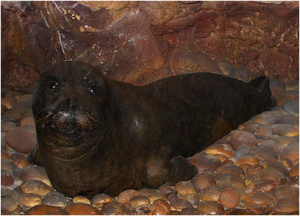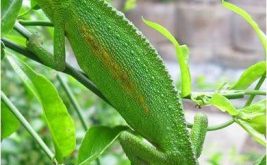Name: Mediterranean monk seal
Scientific name: Monachus monachus
Family: Phocidae
Kingdom: Animalia
Phylum: Chordata
Class: Mammalia
Order: Carnivora
It all started 25 million years ago! Then the first seals appeared in the northern seas. From there they traveled the length and breadth of the Earth and made the different kinds of seals we know today. Among them is the Mediterranean seal, the famous Monachus monachus.
Description
One of the rarest and oldest seals on the planet. There are three species of Monachus, one species has unfortunately disappeared, the Caribbean seal or Monachus tropicallis. The other two species are the Mediterranean Monachus monachus seal (photo) and the Hawaiian Monachus schauinslandi seal.
There are currently only 400-500 Monachus monachus, so efforts are being made to protect them strictly, while those in Hawaii are much larger. Some argue that it was so named because it is a solitary animal and does not form large social groups. According to all indications, however, the Mediterranean seals used to live in flocks.
One of the main features of these nests, from which they probably got their name, is the folds that form their skin on the neck, which resembles a cap of Roman Catholic monks. They live in large groups, preferring isolation from human presence and where the water is warm. There are some differences, mainly in the type of Mediterranean seal, while the other two look like each other, something we can see from the color of their little ones. The young Monachus monachus are born black with a white mark on the abdomen while the others are completely black without any other color.
The height of the adult seals is up to 2 and a half meters and they live up to 30 years. They conceive for 11 months and give birth to a baby almost every one or two years and rarely give birth to twins. At the age of 3-4 they are now mature and can mate and give birth. Their babies have open eyes and thick fur so they can warm up in the first months of life because they have no fat. As they grow older after a few weeks, their baby’s fur falls out and is replaced by a shorter lighter hair. They weigh 15-20 kg and are about 1 meter high. They love to play and are very attached to their mother. When they mature they leave their mother and go elsewhere to mate.
Monachus monachus always has wet eyes, because it does not have the tear duct that leads the tears from the tip of the eye to the nose, as most mammals have, and so it always looks like it is crying.
Habitat
The Monachus monachus seal lives and raises her children on the shores around the sea. During childbirth, they choose deep caves to protect their babies from the dangers of sea waves. They stay for many hours in the caves, in places where they are clean and there is food nearby. On hot days of the year they spend many hours at sea and go to the caves when the sun goes down to rest and sleep. On the contrary, in winter, with the cold, they are gathered in their caves. In the past, many seals used to gather together and now they have started to gather in groups with a smaller number so that they can escape more easily from being chased by hunters.
They feed on fish and seaweed that help digestion. They eat the fish by shaking it in order to get rid of their entrails.
Risks
In the old days, people used the Mediterranean seals for their skin and meat, but over time, during the Roman period, hunting increased and many seals were exterminated. As a result, they declined significantly in the 3rd and 4th centuries.
Today there are many dangers, especially from their hunting by fishermen, because they cause damage to the nets, thus releasing the fish they collect, since they themselves are looking for food and cannot find it easily elsewhere.
Over time, due to various factors that have negatively affected animals and their shelters, the species has become extinct in more than 10 countries in the last 20 years.
The man himself was an obstacle for the seals with the marinas and the new houses he is building near the sea as well as with the hotels. So many times it destroys the shores where the seal nests and gives birth. Also, where there is a large population, there is pollution and noise, which greatly disturbs the sensitive seals. With garbage and chemicals in a polluted sea, it is perfectly normal for seals to be in danger.
Sources:
[1] http://animalisourlifes.wordpress.com/2010/04/12/%CF%86%CF%8
E%CE%BA%CE%B9%CE%B5%CF%82%CE%BC%CE%BF%CE%BD%CE%A
C%CF%87%CE%BF%CF%85%CF%82%CE%BC%CE%BF%CE%BD%CE%A
C%CF%87%CE%BF%CF%85%CF%82/
[2] http://www.alonissos-park.gr/index.php?option=com_content&view=article&id=49&Itemid=56
[3] http://www.monachoulis.gr/displayITM1.asp?ITMID=14
[4] http://www.thalassa-project.gr/LH2Uploads/ItemsContent/21/%CE%9C%CE%B5%CF%83%CE%BF%CE%B3%CE%B5%CE%B9%CE%B1%CE%BA%CE%AE-%CE%A6%CF%8E%CE%BA%CE%B9%CE%B1-Monachus-monachus.pdf
Image source:
http://el.wikipedia.org/wiki/%CE%91%CF%81%CF%87%CE%B5%CE%AF%C
E%BF:9096_-_Milano_-_Museo_storia_naturale_-_Diorama_-_Foca_Monaca_-_Foto
_Giovanni_Dall%27Orto_22-Apr-2007.jpg
©Giovanni Dall’Orto
 Κυπριακό Κέντρο Περιβαλλοντικής Έρευνας & Εκπαίδευσης – Κυκπεε
Κυπριακό Κέντρο Περιβαλλοντικής Έρευνας & Εκπαίδευσης – Κυκπεε




